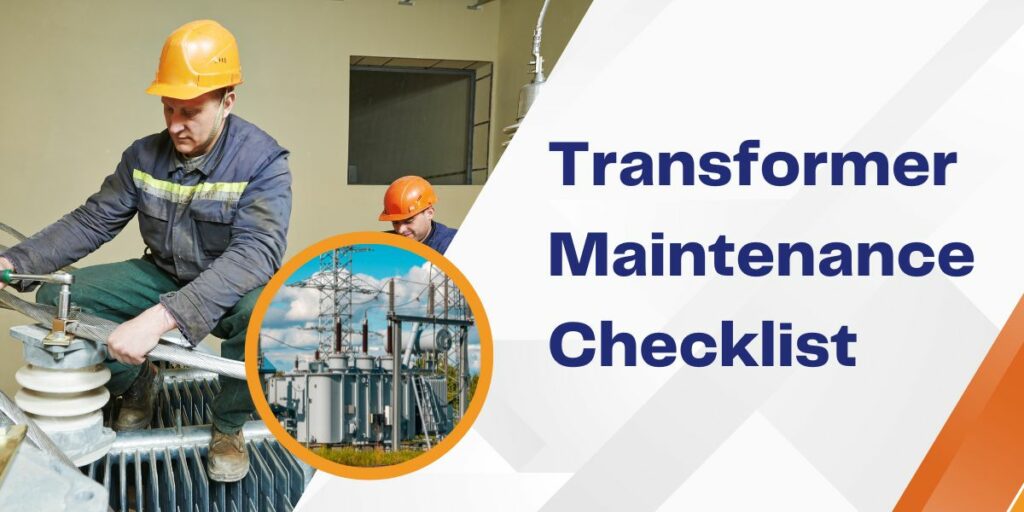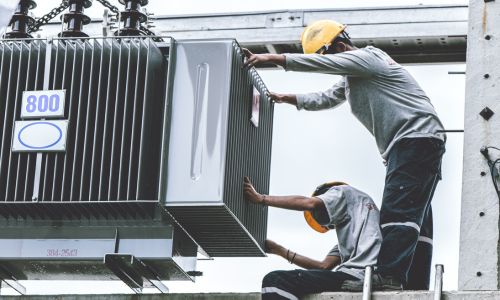

Transformer Maintenance Checklist 101

Transformers, like any other electrical equipment, require regular maintenance as well. With proper care, a transformer can function smoothly, increasing your productive workflow and ensuring a longer equipment life. We understand that putting a regular transformer check on your schedule might be hectic, with many different parts and components requiring individual care and attention almost daily, some even hourly. Hence, we have come up with the most comprehensive checklist for the maintenance of electrical transformers. Read on to learn more about the essentials to keep your transformer healthy in this article.
What Is The Importance Of Transformers In An Electrical Power System?
Transformers can be generally defined as voltage-controlling devices allowing the distribution and transmission of current. It is widely used in electrical industries to handle high voltage electric current and distribute it in low voltages for consumption. This is necessary as the high voltage current, when distributed directly to your homes, may lead to short circuits and destroy your electrical appliances.
Electrical transformers work on the principle of electromagnetic induction and work by increasing or decreasing the supply voltage. Thus it helps in the seamless movement of electricity from generating power plants to homes and offices. As such, the importance of transformers in an electrical power system would include:
- Converts high voltage AC to low voltages so that it’s safer to distribute
- Safe medium to distribute electricity over long distances.
- Helps prevent damage from High Voltage AC in a circuit
- Controls the power of AC, which helps in lowering your electricity bill
How Does An Electrical Transformer Work?
As we know, a transformer works on the principle of electromagnetic induction and alternates current from higher to lower voltages. Hence, a transformer doesn’t itself create energy but is a mere distributor of energy by changing the voltages to suit the needs of different circuits.
The electricity enters the transformer through the primary coil. With this, there forms a moving magnetic field around the coil. The secondary coil from which the current is distributed at a lower voltage is placed near the primary coil. Thus, with the moving electric field, the current is either increased or decreased based on turns taken by the current. Wrapping the two coils together ( the primary and secondary coil) with the primary one with a few more loops than the other one generates a current at a lower voltage in the second coil than it is present in the primary coil.
Checklist For Daily Maintenance Of Transformers
There are a few components of transformers that are required for daily maintenance. This type of regular checking on your transformers is also known as conditional maintenance. As such, your daily checklist for electrical transformer maintenance must include the following:
- Check the transformer yard to ensure no object may disrupt the transformer’s working.
- Ensure that the re-extinguishers are free from dust so that they may quickly work in the face of an emergency.
- Make sure the transformer is clean and placed in a proper space.
- Keep track of any abnormal noises in the transformer to avoid costly breakdowns.
- Look out for loose connections in your transformer, mostly around earthing and surge arrestors.
- Keep a note of the reading on the winding temperature of your transformer.
- Check the incoming supply of current. Keep it is in the ON position.
- Also, look at the re-buckets occasionally to check for enough sand.
- Ensure you check the oil temperature, hourly level, and voltage points.
Components That Require Annual Maintenance Of Transformers
You must get the transformer checked in detail, on a yearly basis. Some of the parts you need to check may include oil pumps, air fans, control circuits, and other components that work together for the function of the cooling system. With the cooling system checked, you can get an overview of the physical condition of your transformer.
The bushing must be cleaned with soft cotton cloths and checked for cracks. Though it is recommended to have a half-yearly check for the oil condition of your transformer, a yearly oil test is mandatory for your transformer. You must also get a mechanical inspection done as a transformer works under heavy current pressures, which makes it prone to damaged parts.
Apart from this, you must get the marshalling boxes cleaned and checked along with other functions like illumination, space heaters, terminal connections, relays, alarms, control switches, etc. Other important aspects to check for may include insulation resistance, battery power, and DGA (Dissolve Gas Analysis).
The Ultimate Monthly Checklist For Your Electrical Transformer Maintenance

The ultimate checklist for your monthly electrical transformer maintenance would include the following:
- Examine the transformer tank, bushings, cooling system, and accessories for any signs of damage, such as oil leaks, corrosion, rust, or physical damage.
- Inspect the transformer for any debris, plants, or other objects that might interfere with its ventilation.
- Utilize the gauge glass or level indicator to determine the oil level. Maintain the oil level within the prescribed range.
- Check the oil for pollutants, color, clarity, and presence of contaminants. Take a sample of the oil for testing if it seems fuzzy or includes particles.
- Utilize the sensors or gauges installed into the transformer to monitor the operating temperature. Keep a watch out for any abnormal increase in temperature.
- Check the condition and functioning of the fans, radiators, and cooling fins.
- Ensure sure that nothing that can restrict heat dissipation is in the way of cooling systems, such as dust, dirt, or obstructions.
- Check for fractures and discoloration or symptoms of tracking in bushings and insulators.
- Maintaining proper insulation may require cleaning insulators.
- Check and tighten all electrical connections, including grounding connections and terminal nuts.
- Keep an eye out for loose connections or overheating.
- To ensure efficient moisture control, check the breather for the right color (typically blue to signify dryness), and replace or regenerate silica gel as necessary.
- Check the functionality of any suitable pressure relief devices and reset them if necessary.
- If the transformer has a gas monitoring system, examine gas levels for unusual activity or problems.
- Keep thorough records of all maintenance tasks, including any anomalies noticed and the steps followed.
- Ensure that all service staff receive regular training and remain acquainted with the most recent practices and safety regulations.
- Consider setting a timetable or employing maintenance management software to track and organize normal repairs.
- To reduce downtime, keep spare parts, oil, and necessary tools close at hand.
- Consult a qualified transformer service provider for additional evaluation and repairs if serious problems or anomalies are found.
Conclusion
Given the importance of transformers in an electrical power system, a routine check of your transformers is worth it. In short, the key to better performance, higher reliability, longer durability and safe working of transformers is proper electrical transformer maintenance on a regular, daily basis. With so many intricate components and high pressure operations, scheduled maintenance of transformers can prevent your business from costly breakdowns or potential electrical hazards.
FAQs
1. What Are The Maintenance Requirements For A Distribution Transformer?
As with any other type of transformer, checking for oil level, voltage surges, connections, and regular visual and performance tests would be enough to manage a well-maintained distribution transformer.
2. Why Do Transformers Need Maintenance And Services?
Transformers work under high-pressure conditions converting high-voltage AC to lower voltages. Due to this, they may heat up faster, and they are open to the risks of electrical hazards. Hence, regular maintenance is necessary to ensure security and avoid the breakdown of a transformer.
3. What Is Oil Needed In Maintenance Of A Transformer?
Oils inside the transformer can serve various purposes like lubrication, cooling, insulation, arc quenching, and damping.